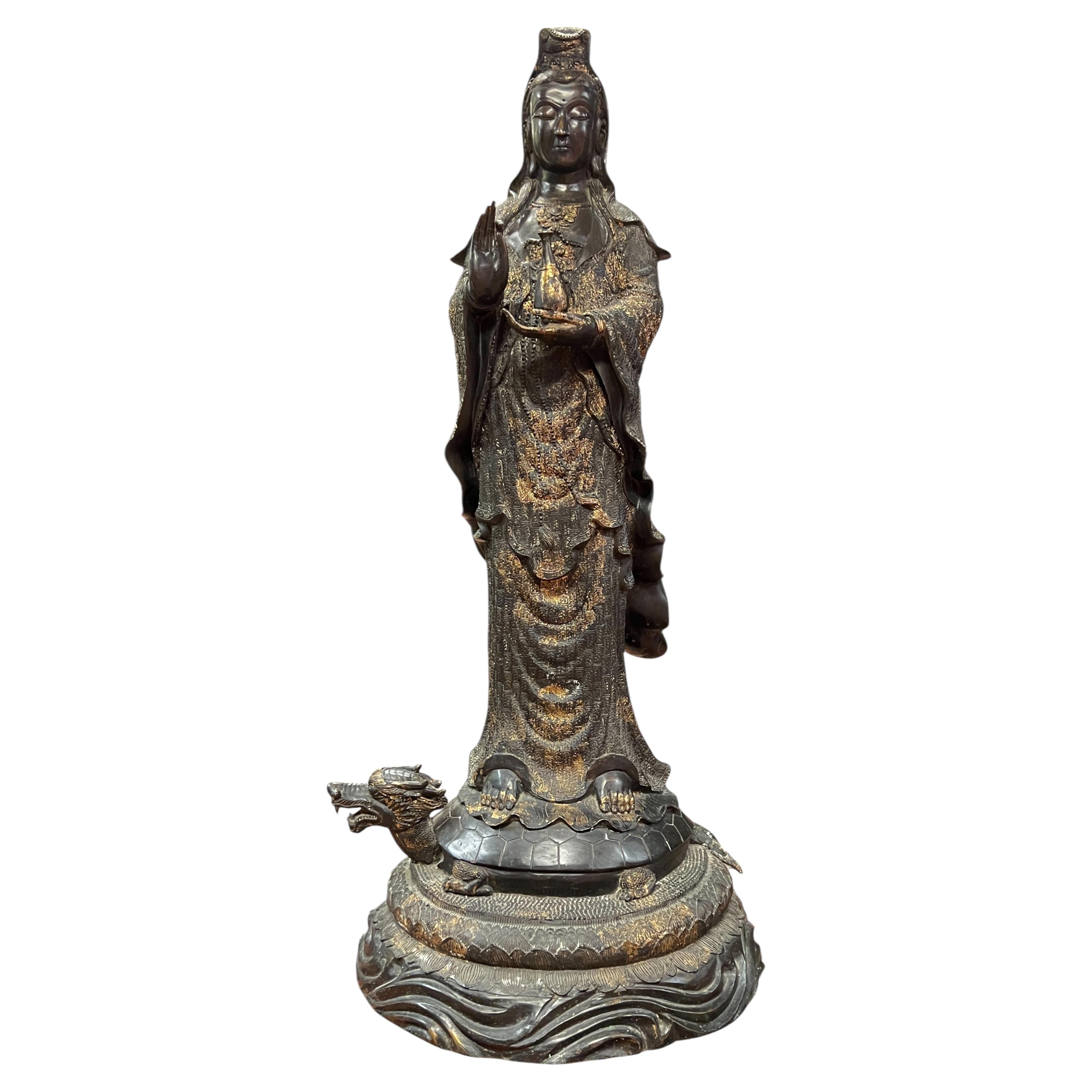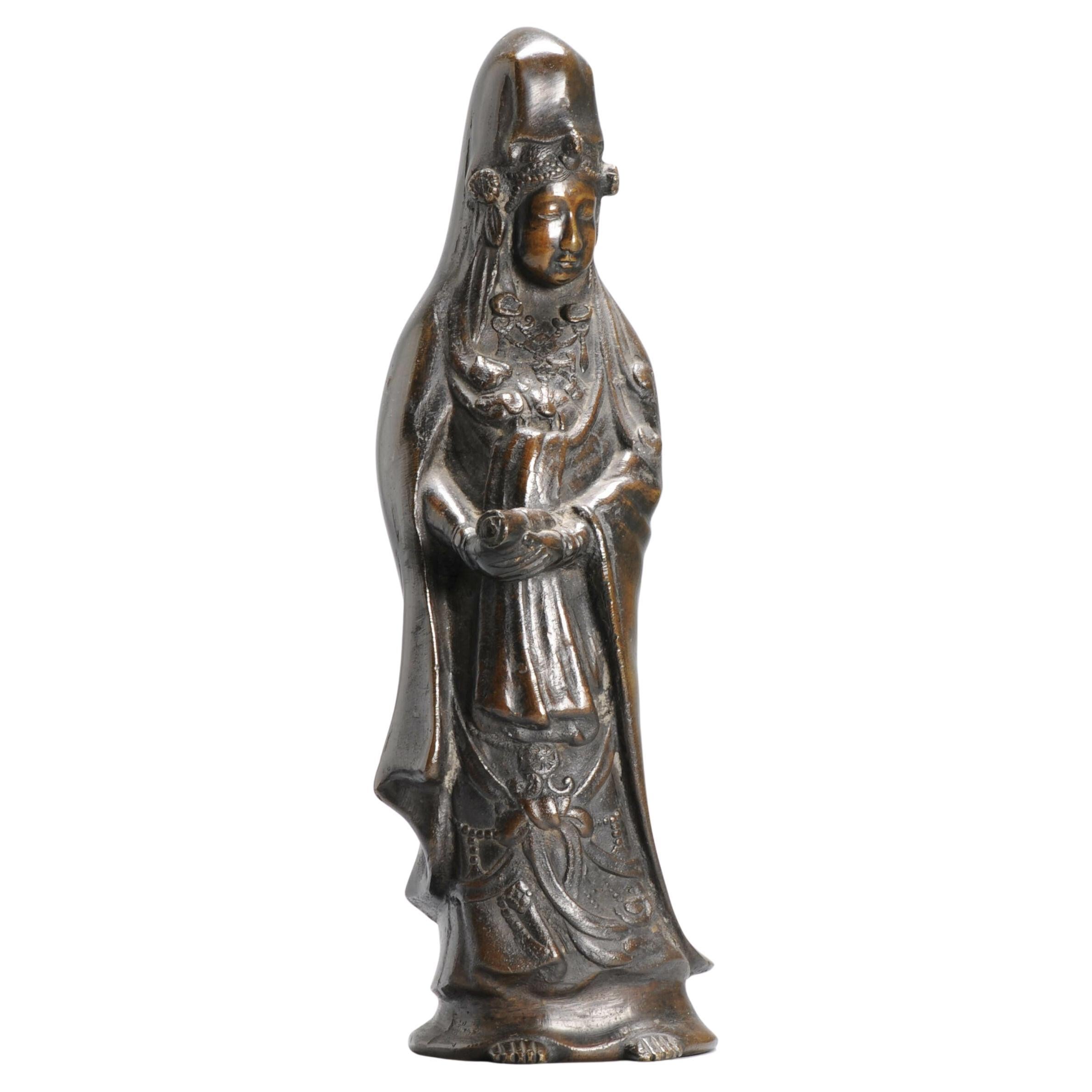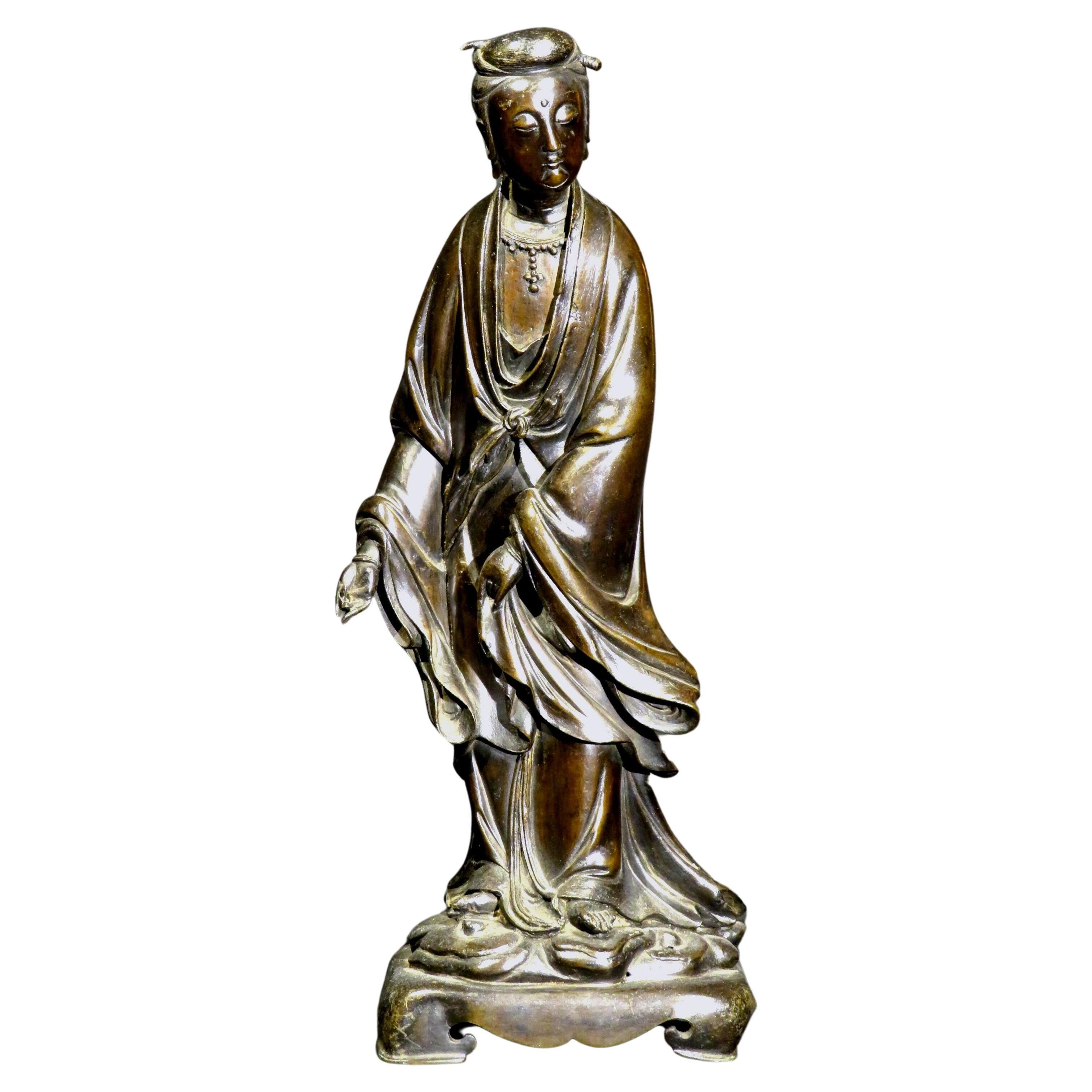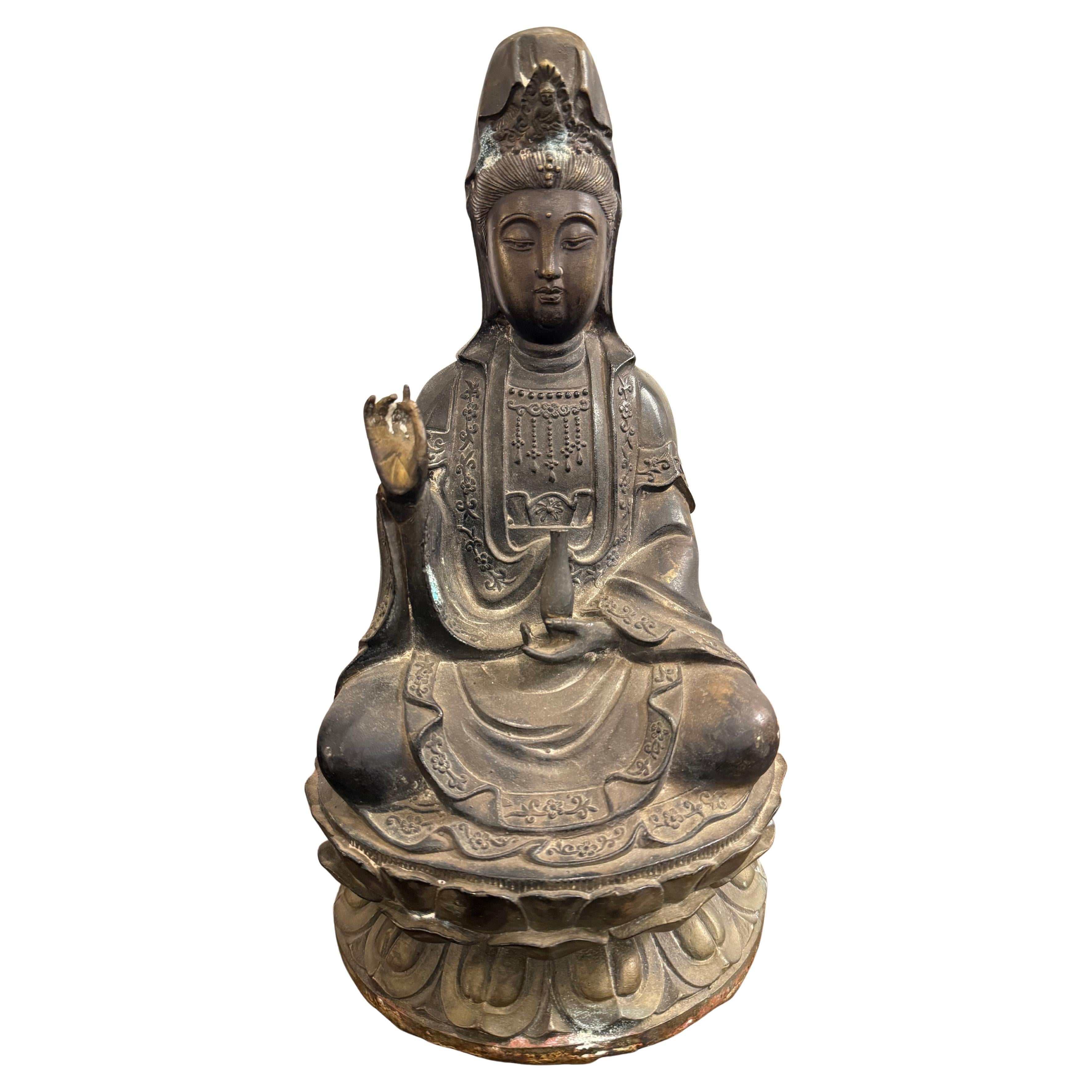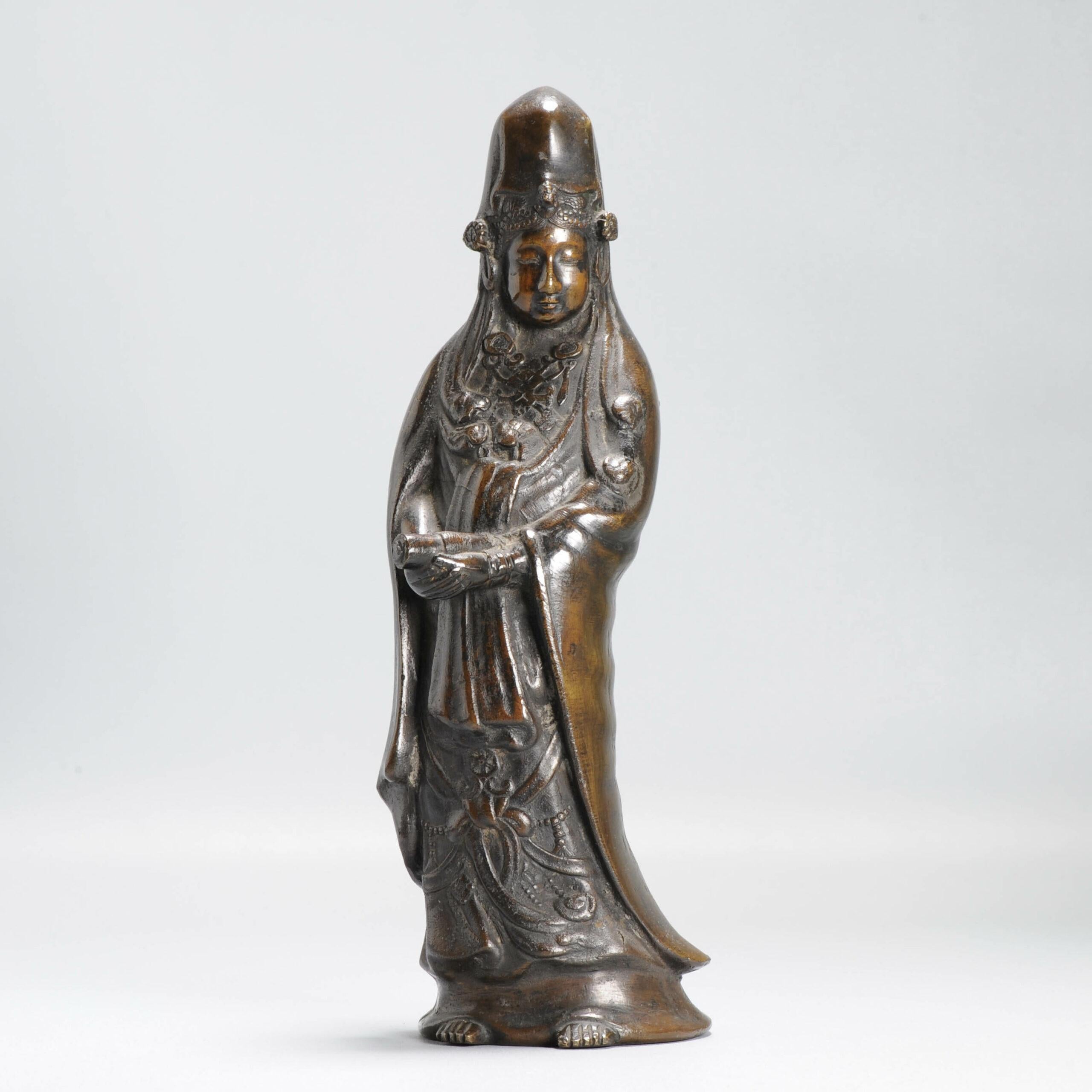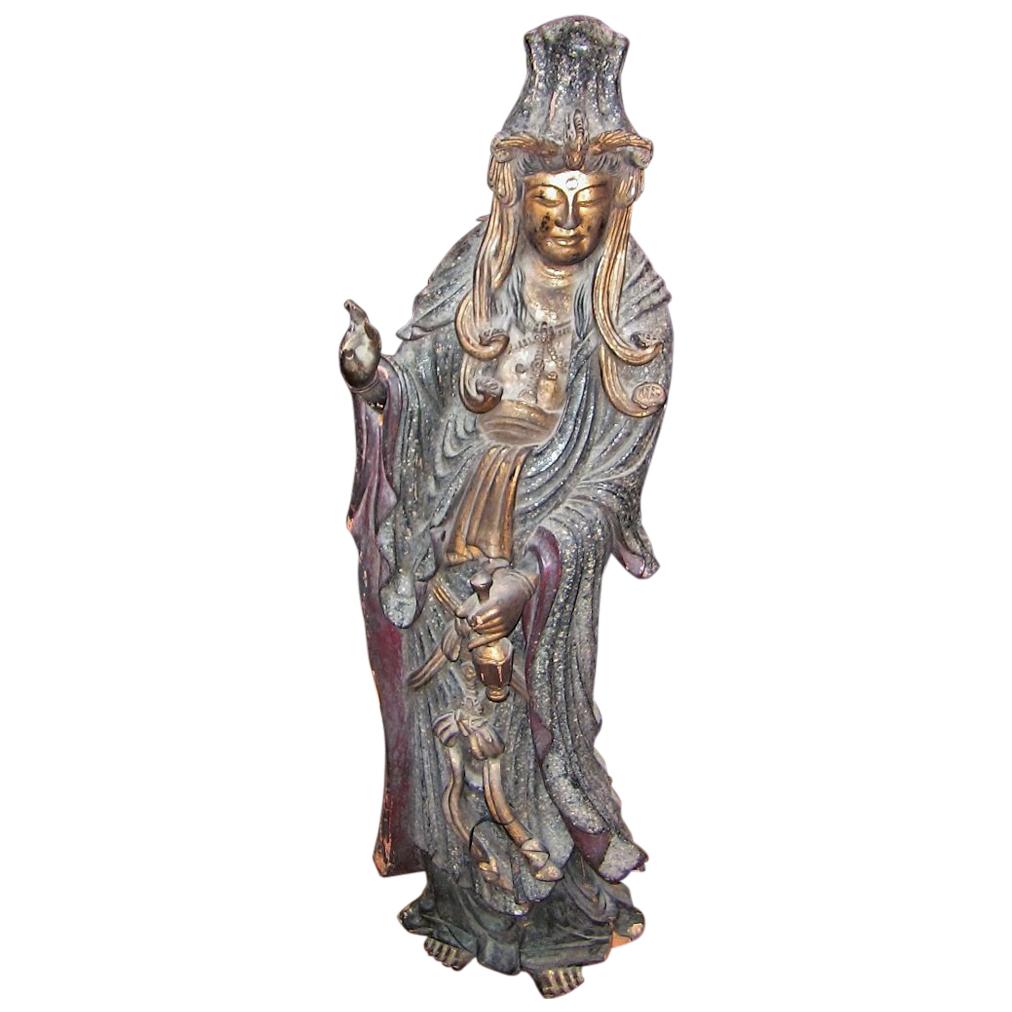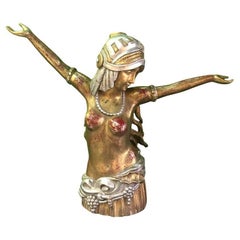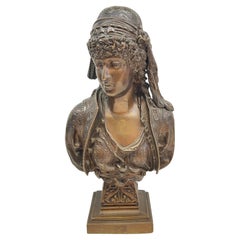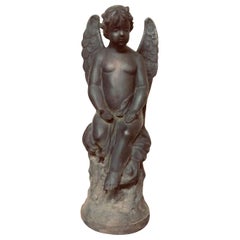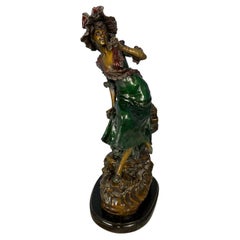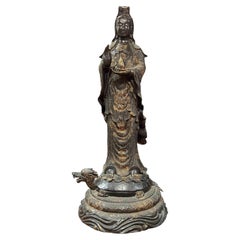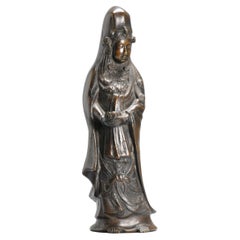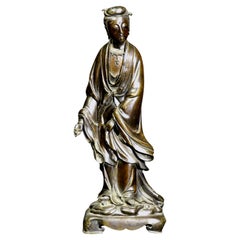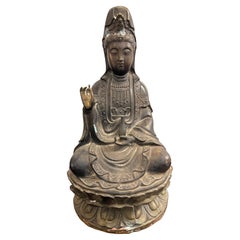Items Similar to Large Chinese Original Bronze Figure of Guanyin
Want more images or videos?
Request additional images or videos from the seller
1 of 15
Large Chinese Original Bronze Figure of Guanyin
$2,330.96
£1,700
€1,982.67
CA$3,191.88
A$3,548.94
CHF 1,853.06
MX$43,199.25
NOK 23,644.25
SEK 22,153.53
DKK 14,797.06
Shipping
Retrieving quote...The 1stDibs Promise:
Authenticity Guarantee,
Money-Back Guarantee,
24-Hour Cancellation
About the Item
This large original bronze figure of Guanyin, depicting the bodhisattva with a sea dragon, is an exquisite example from the Qing dynasty, likely reflecting the intricate artistry and spiritual significance of the period. Guanyin, known as the Goddess of Mercy, is a revered figure in Chinese Buddhism, often associated with compassion and protection. The sea dragon may symbolize power and strength, adding layers of meaning to the artwork.
- Dimensions:Height: 19.3 in (49 cm)Width: 7.88 in (20 cm)Depth: 7.88 in (20 cm)
- Materials and Techniques:Bronze,Cast
- Place of Origin:
- Period:
- Date of Manufacture:19th Century
- Condition:Wear consistent with age and use.
- Seller Location:Southall, GB
- Reference Number:1stDibs: LU5808243058512
About the Seller
5.0
Vetted Professional Seller
Every seller passes strict standards for authenticity and reliability
Established in 1956
1stDibs seller since 2021
73 sales on 1stDibs
Typical response time: 1 hour
- ShippingRetrieving quote...Shipping from: London, United Kingdom
- Return Policy
Authenticity Guarantee
In the unlikely event there’s an issue with an item’s authenticity, contact us within 1 year for a full refund. DetailsMoney-Back Guarantee
If your item is not as described, is damaged in transit, or does not arrive, contact us within 7 days for a full refund. Details24-Hour Cancellation
You have a 24-hour grace period in which to reconsider your purchase, with no questions asked.Vetted Professional Sellers
Our world-class sellers must adhere to strict standards for service and quality, maintaining the integrity of our listings.Price-Match Guarantee
If you find that a seller listed the same item for a lower price elsewhere, we’ll match it.Trusted Global Delivery
Our best-in-class carrier network provides specialized shipping options worldwide, including custom delivery.More From This Seller
View All20th Century Art Deco Carved-Wood Figure
Located in Southall, GB
Art Deco carved-wood figure of a lady with her arms stretched out in gold and silver gilt.
Category
20th Century Figurative Sculptures
Materials
Wood
$1,131 Sale Price
50% Off
French 19th Century Signed Huzel Bronze Lady Sculpture
Located in Southall, GB
Huzel is a French sculpturer (French, 19th Century) Primarily known for bronze sculptures often depicting females figures, animals and mythical forms.
He is known for intricate deta...
Category
Antique 19th Century French Sculptures and Carvings
Materials
Bronze
19th Century Large Bronze Angel
Located in Southall, GB
A beautiful 19th century large bronze angel with wonderfully aged patina. Perfect as garden furniture or home decoration.
Category
Antique 19th Century English Statues
Materials
Bronze
$2,742 Sale Price
20% Off
Bronze Lady, Signed 'Louis Hottot', 20th Century
Located in Southall, GB
A fine 20th century statue of a two-tone patina bronze woman dressed in Classic Victorian clothing, holding a pair of theatre binoculars. Signed by ...
Category
Early 20th Century French Figurative Sculptures
Materials
Bronze
$2,139 Sale Price
20% Off
20th Century Large Bronze Laughing Budai, Italian Bronze Garden Ornament
Located in Southall, GB
A large 20th century bronze laughing Budai originally from the New York apartment of John Legend, an American singer and songwriter. Budai, Hotei or Pu-Tai is a semi-historical monk ...
Category
20th Century Italian Figurative Sculptures
Materials
Bronze
$15,356 Sale Price
20% Off
Allegorical Bronze Figure of Liberty or Victory
Located in Southall, GB
An evocative early 20th century bronze allegorical sculpture depicting a robed female figure in a commanding stance, arm extended skyward in a powerful gesture of inspiration or triu...
Category
Early 20th Century European Busts
Materials
Bronze
You May Also Like
Large Patinated Bronze Standing Guanyin Buddha Statue / Sculpture
Located in New York, NY
Guanyin statue in patinated bronze with gilt highlights, holding a bottle of purifying water, standing on the back of a turtle, symbolizing her role as protector (particularly to fis...
Category
Early 20th Century Chinese Figurative Sculptures
Materials
Bronze
Antique Chinese Bronze Statue Guanyin China 19th / 20th century
Located in Amsterdam, Noord Holland
BRONZE top level Chinese statue
Qing period, 19th century.
Condition
29.5cm
Period
19th century
Category
Antique 19th Century Japanese Edo Metalwork
Materials
Porcelain
$899 Sale Price
20% Off
A Finely Cast Standing Bronze Figure of Guanyin, 17th / 18th Century
Located in Ottawa, Ontario
The finely cast bronze figure of Guanyin - Bodhisattva Goddess of Compassion, Kindness & Mercy.
Shown wearing an outer robe finely modelled with cascading folds tied at her waist, h...
Category
Antique 1690s Chinese Qing Sculptures and Carvings
Materials
Bronze
A Chinese Bronze Seated Guanyin with Mark, 19th Century
Located in ARMADALE, VIC
A Chinese Bronze Seated Guanyin with Mark, 19th Century
Guanyin is the Buddhist bodhisattva associated with compassion. In the East Asian world, Guanyin is the equivalent term for A...
Category
Antique 19th Century Chinese Qing Sculptures and Carvings
Materials
Bronze
Antique Chinese Bronze Guanyin Statue 19th/20th Century
Located in Amsterdam, Noord Holland
Bronze top level Chinese statue
Qing period, 19th century.
Additional information:
Material: Bronze, Metal & Cloisonne
Type: Statues
Region of Origin: China
Period: 19th century
C...
Category
Antique 19th Century Chinese Statues
Materials
Porcelain
19 Century Asian Wooden Carved, Painted and Gilded Guanyin Statue
Located in Dallas, TX
Presenting a stunning 19 century Asian wooden carved, painted and gilded Guanyin statue.
This wooden statue is hand carved, hand painted and hand-gil...
Category
Antique Late 19th Century Korean Folk Art Sculptures and Carvings
Materials
Wood, Giltwood, Lacquer
More Ways To Browse
Bronze Chinese Sculpture
Chinese Qing Figure
Chinese Bronze Figure
Bodhisattva Chinese
Chinese Guanyin
Sea Dragon
19th Century Bronze Goddess Sculpture
Chinese Goddess
Antique Guanyin
Guanyin Sculpture
Goddess Of Mercy
Bronze Guanyin
Antique Japanese Statues
Carved Wood Statues
Green Ming Dynasty
Lantern Light Japanese
Thai Bronze Buddha
Antique Indonesian Art
